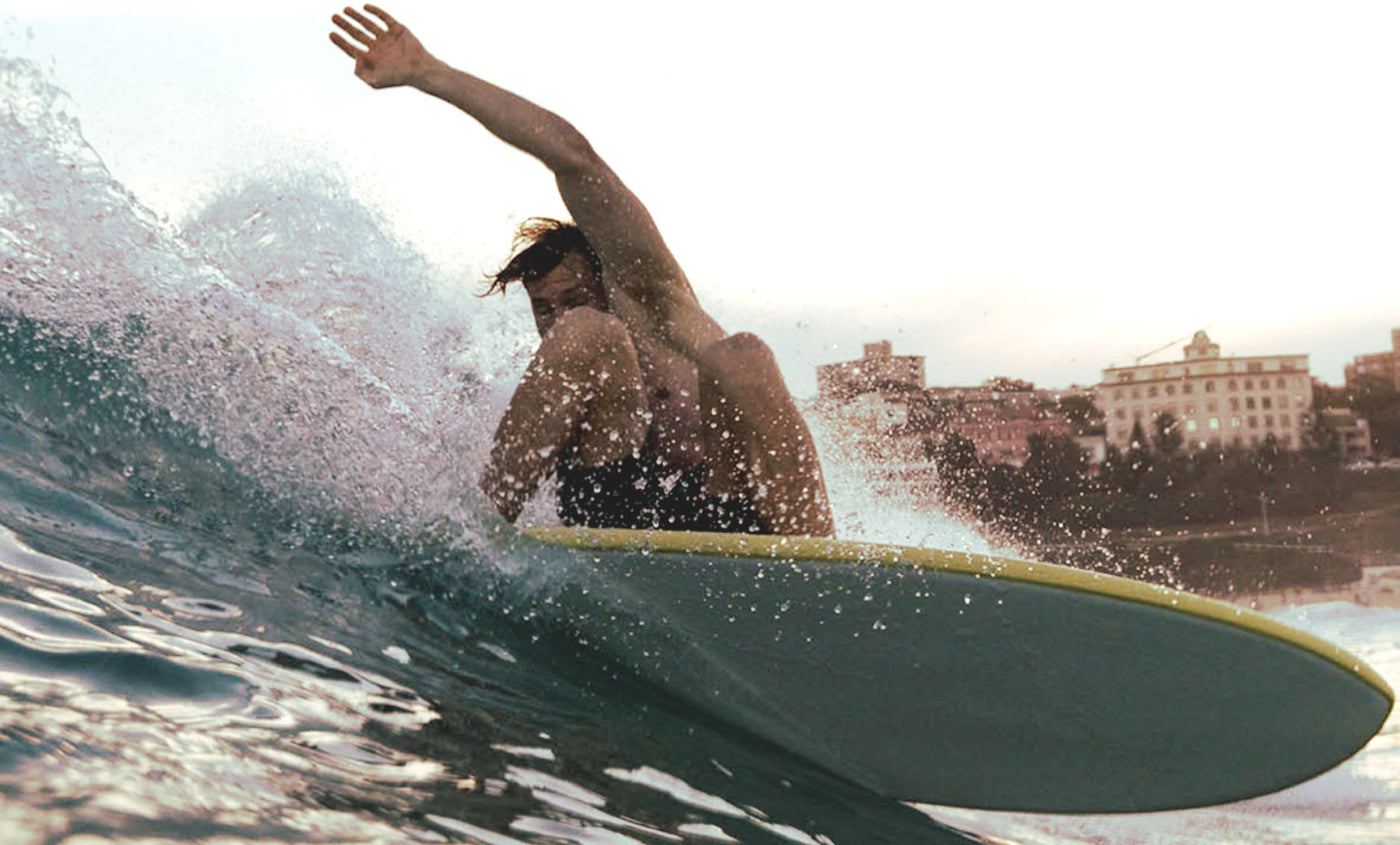Your Cart is Empty

Surfing, we would argue, is the adventure sport that most makes you feel at one with nature. The power of the waves, immersed in the sea, the exhilaration of being propelled forward by a force of nature is an addictive mix. It is a paradox then that the toxic nature of surfboard manufacturing has been one of surfing's biggest environmental impacts.
The main "ingredients" in making a surfboard have not changed since the late 1950s/early 1960s. They consist of a polyurethane foam blank (with a wood stringer), fiberglass, and polyester resin. While these materials have allowed the sport to make significant advancements in surfboard design, they retain equally significant drawbacks, including potential hazards to individuals working with these materials, potential contamination to the environment, and the resulting production of a non-renewable product.
The good news, however, is that the surf industry is made up of die-hard surfers who really do care about the environment. Because of that, the board building community is actively seeking and pursuing new materials and processes to protect the environment and with the increased popularity of foamies, or softboards, smaller innovative brands are springing up to find a better solution.
Spooked Kooks is an Australian brand are the first to bring a premium soft top made with post-consumer recycled plastics. Leaders of the green wave, they were first to recognise the mountain of plastics waste being created each year by the enormous amount of soft tops being sold worldwide. Most of these boards have a 2-year life cycle and are being trashed.

They have a mission to make the best performing and most durable softboards containing as much recycled plastic waste as possible.
100% of all High-density Polyethylene used in their boards is recycled post-consumer plastic waste. This includes the entire “slick” (underside of the boards), leash plug, fin boxes, fins and fin key.
Their core mission flows through their overall approach, from looking at ways they can integrate other recycled materials and sustainable non-plastic materials into their boards, to ways they can improve their manufacturing process, packaging and products to minimise the amount of new plastic used and waste created.
| >> Read the feature here << |